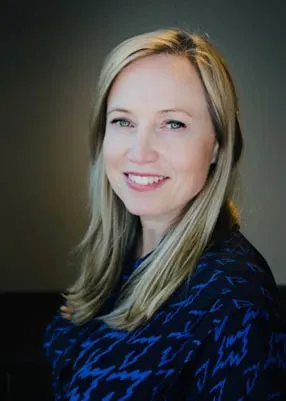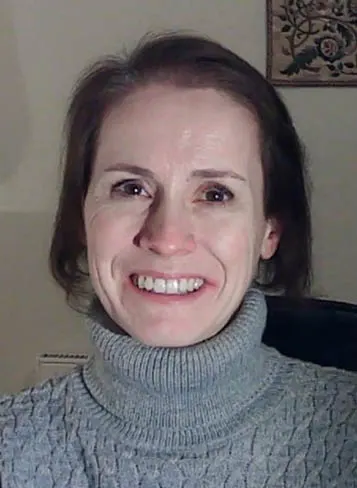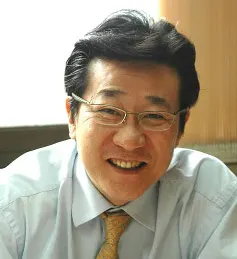Societies and their journals walking the talk on the road to equity
2024년 2월 1일
저자: Zoë Genova

Morsa Images/DigitalVision via Getty Images
How two societies are championing gender inclusion and geographic diversity on their journal editorial teams and beyond
To support diversity, equity and inclusion in the research ecosystem, we’re highlighting the activities of two forward-thinking societies in making their journals more equitable.
Making JACI: Global truly global
Creating a new journal offers a unique opportunity to incorporate inclusion and diversity (I&D) into its founding framework. As part of a longstanding publishing partnership with Elsevier, the American Academy of Allergy, Asthma & Immunology 새 탭/창에서 열기 (AAAAI) launched The Journal of Allergy and Clinical Immunology: Global 새 탭/창에서 열기 (JACI: Global) in 2021 with I&D front and center. JACI: Global is a peer-reviewed gold open access journal featuring global and regional perspectives on allergy and immunology.
Editor-in-Chief Dr David Peden 새 탭/창에서 열기 and Elsevier Senior Publisher Rachael Engels were keen to ensure that this new title had an editorial board that was diverse in terms of geography and gender. “I advised that the journal would do well to ensure that the word ‘global’ was reflected in the nature of the editorial board, and diversity in gender was also an important factor in appealing to both authors and readers of the journal,” she said. “We very intentionally worked to recruit an editorial board with experts from Europe, Asia, Africa, North and South America.”

David Peden, MD, MS, Editor-in-Chief, JACI: Global
Dr Peden added: “We also very much wanted to be sure we had equal representation of men and women as well as ethnicities on our board.”
As a geographically diverse journal, JACI: Global is also particularly interesting to authors from lower income countries, who receive waivers or discounts on Article Publishing Charges (APCs) through the journal’s participation in Research4Life.
As part of these joint efforts, JACI: Global has striven to appoint the most diverse editorial board possible: the board now comprises members from Australia, Brazil, Egypt, Italy, Japan, South Korea, the UK and the US. Women also make up 60% of its editorial board members and 50% of its editors.
On the importance of having diverse perspectives, Dr Peden said:
It frankly helps us to have these perspectives, especially with manuscripts where there is a divergence of review opinion. A diverse board gives perspectives that may counter an implicit bias towards North American and European perspectives on the relevance of a given article. We wanted people who were experts in the specialty but were also reflective of our professional and patient populations. We also wanted to show our early career colleagues that there could be opportunities for them in this journal.
6 steps to diversifying your journal’s editorial board
For societies looking to improve I&D on their journals’ editorial boards, Elsevier Senior Publisher Rachael Engels gave suggestions on how to establish a more inclusive editorial team:
Gather the data for the gender and geographic makeup of the journal.
Gather the data for the gender and geographic makeup of the field the journal is in.
Identify quality diverse candidates (publisher contacts can help with this effort).
Have the Editor-in-Chief reach out directly to invite candidates when possible.
Make sure calls for submissions reflect your I&D values.
Showcase success stories.
And don’t give up even when you get pushback, she added: “To make change, you must believe in it, and everyone involved must be ready to stand behind it.”

Rachael Engels, Senior Publisher, Health & Medical Sciences, Elsevier
JACI: Global is now working to expand its group of associate editors and to continue to be mindful of both professional expertise and representation. AAAAI is looking to have periodic reviews for the various interest sections, which cover specific professional issues with its specialty. These initiatives will involve both established and early career researchers to give them experience with the journal process.
Improving gender diversity in engineering
In a male-dominated field like engineering, it can sometimes seem impossible to recruit women for editorial team positions. However, Elsevier’s Kay Tancock 새 탭/창에서 열기 knew that there were many qualified women experts in the field — they had just not been reached yet. As Senior Publisher of the Engineering Applications of Artificial Intelligence 새 탭/창에서 열기 (EAAI) journal, published by Elsevier on behalf of the International Federation of Automatic Control 새 탭/창에서 열기 (IFAC), she set out to turn this idea into a reality.
When Dr Patrick Siarry 새 탭/창에서 열기 became Editor-in-Chief in 2022, he and Kay began working together to improve the journal’s gender diversity.
The journal already boasts an impressive geographic diversity, with 274 editors and editorial board members representing 52 countries/regions on six continents. When discussing the many areas that are regularly assessed and targeted for improvement when someone begins an Editor-in-Chief role, Dr Siarry and Kay agreed upon gender as a key priority and next step on EAAI’s inclusion journey. Dr Siarry was engaged and supportive, searched for suitable names, and invited candidates to join the board personally. As a result, they improved the presence of women on the journal’s editorial teams by more than 15% in one year.

Kay Tancock, Senior Publisher, Signal Processing and Control, Elsevier
Dr Siarry attributes this success to carrying out a thorough review of the professional environment of the field. He suggests that others who are trying to improve editorial gender diversity review the following:
Committees of relevant conferences
Invited and keynote speakers at major conferences/events in the field
Authors of recent book chapters
Members of specialized working groups and/or funding body advisory groups
Through access to the Elsevier-owned Scopus database, we are also uniquely placed to help with identifying names as well.
In addition to improving diversity on editorial teams at the journal level, IFAC is incorporating I&D efforts on a broader, organizational level. IFAC has established an Education Activities Committee to remedy the fact that fewer young people are studying and entering the control engineering field. IFAC President Dr Dongil “Dan” Cho 새 탭/창에서 열기 said: “We have a program to teach what control engineering can do to primary and middle school students, especially focusing on young girls, to foster the next generation of female engineers.”
Dr Cho added that beyond gender diversity, IFAC is looking to offer more opportunities to researchers in underrepresented countries and for those with language barriers.

Dongil “Dan” Cho, PhD President, IFAC
To encourage I&D progress, in 2023, the IFAC Foundation 새 탭/창에서 열기 launched a Diversity and Inclusion Award 새 탭/창에서 열기, sponsored by Elsevier. The inaugural award was presented to Prof Bozenna Pasik-Duncan 새 탭/창에서 열기 of the University of Kansas Department of Mathematics at the IFAC World Congress in Yokohama Japan for her enthusiastic and unwavering leadership in promoting diversity and inclusion, and for inspiring and supporting women and young people within IFAC.
Reflecting on IFAC’s work and the way I&D can truly make a difference in the research ecosystem, Kay said:
I&D is crucial to a successful, growing journal and its audience. Basically, improving I&D amongst a journal’s community is, in my view, the right thing to do; it means the articles ask and address a wider range of questions, we publish more impactful research for the benefit of all in society, high quality work is given a platform — no matter who has performed it — and everyone benefits from exposure to new and previously underrepresented ideas.
기여자

ZG